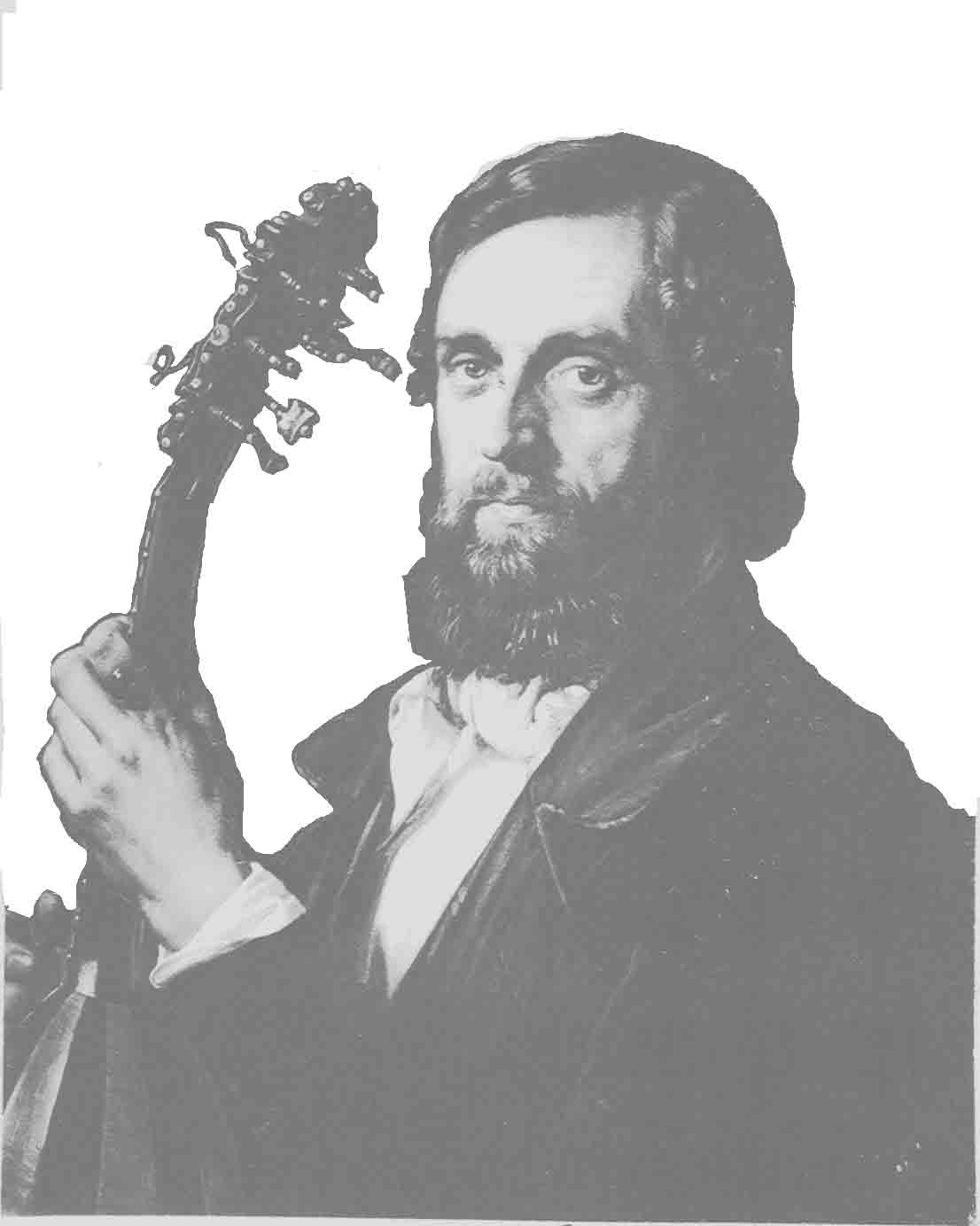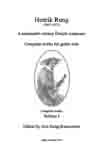|
Introduction
|
Element of time
|
The complete works of Rung and
it's |
| Sense of style |
Link to Sor |
place in the guitar world |
| Background of his chamber music |
Important Rung Links |
Download
free scores of Henrik Rung |
| His artistic personality |
My approach to Rung's music |
Hear
music by Henrik Rung |
|
Performing Rung the music of Henrik Rung meets few very specific challenges.
The qualities of his music might be experienced different from the rest
of the great early romantic composers. Mainly because he is working in
the Nordic tradition. It appears to be very simple, well crafted and with
a convincing melodic material (Like Scandinavian design). On a purely
musical and artistic level his music possesses very deep and very substantial
musical qualities. My personal experience with his music is very appealing
and successful with the audience. The quality of Rung's music has taken
me by surprise since I began to approach his music. Pieces I found insignificant
by looking at the score appeared to be very well sounding and delicate
music when I started to perform these pieces. My explanation is that we
as guitarists in general has no performance experience of nineteenth century
Nordic tradition. Some of the reason Scandinavian tradition appears to
be different is based on the fact that Scandinavia was never occupied
by the Roman Empire. When Roman law formed the rest of Europe's culture
Scandinavian culture developed without the Roman law and it's way of thinking.
|
|
What is essential to understand in order
to perform Rung's music
- The sense of Nordic style is essential to a successful performance
of Rung's music. A stylistic sense of music by composers like Grieg,
Gade, Sibelius etc. It is very difficult to explain, and it is a cultural
heritage that only can be fully achieved from someone who is fairly
familiar with this particular style. The Nordic music posses a much
deeper introspective passion. It is heavier and the music is not focused
on demonstrating the instruments virtuosic abilities. Opposite to the
many guitarist in the south the Nordic nineteenth century guitarist
search for deeper into the instruments means of expression. Rung could
allowed himself to be true to this tradition all of his life. He never
depended on pleasing an audience for his living. He held a safe position
at the Royal Theater in Copenhagen, and his life was never affected
by the decline of the classical guitar in the last half on the nineteenth
century. His music has also deep, very joyful and jovial aspects. Very
close to the artistic line of the Danish ballet master A.
Bournonville. Parts of Rung's guitar music seems amateurish and
to heavy for the guitar. I believe it is an element of Danish folklore.
Like the obvious element of folklore in the music of Villa-Lobos.
- Rung's chamber music is mainly written for his children's musical
training. Rung's complete works is the only chamber music school from
the nineteenth century. The duration off the pieces are not very long,
His form might be inspired by John Dowland's lute music. (Henrik Rung
was a pioneer in the art of performing renaissance music) For a concert
I would put together 4-10 pieces and consider them different character
pieces. A children's suite.
- Rung was a very modest person. He was highly decorated by the Vatican
in Rome and the Swedish Academy in Stockholm for his work as an artist.
Nobody knew until his family found out after his death in 1871. This
modest character must have had an influence on his work. It is difficult
for me to tell if he had a jovial character. Most Danes do.
- It takes a while to fully achieve Rung's music and to understand the
deeper aspects of his music. Please allow your self the time. It is
absolutely worth it.
- I started to perform Henrik Rung's music because I had to represent
Danish Culture different places in world. I did not rate his music so
high, but Rung's music was always successful at a performance. I began
to do research on the life and works of Henrik Rung . There is almost
no research on Henrik Rung, so I was pretty much on my own in the field.
The results was a central figure in the Danish Golden age, a founder
of Nordic tradition, a very productive composer, a pioneer in the art
of performing renaissance music, and a guitar composer that certainly
composed a little different compared to the mainstream. I collected
all the guitar music of Rung from his own collection at the royal Library
in Copenhagen. There were a lot of pieces most them with the tempo marking
andante and they were all very alike.
Rung must have tried to create a musical expression within very narrow
frames. After I realized this, a world of nuance and very deep music
expression started to unfold for me. I believe he must have tried to
express the jovial and melancholy nature of Scandinavians. This was
my key to his music
- . Henrik Rung's work might reappear in today's classical
guitar world for two reasons.
It is the only chamber music school from the nineteenth century
It is the only major collection written in the nineteenth century
Nordic guitar tradition.
|
 |
|
|
Rung was very inspired by the compositions of Fernando
Sor (read my article).
My personal experience is a slight change in the way I perform the works
of Sor after I have studied and performed the music of Rung. Rung is
a link that tie us back in music history.
Please enjoy the music of another nineteenth century guitar composer
almost unknown the guitar world until today. Rung's music might open
new aspects of the nineteenth century repertoire and how we perform
this music.
Jens Bang-Rasmussen
Copenhagen 2003
|

